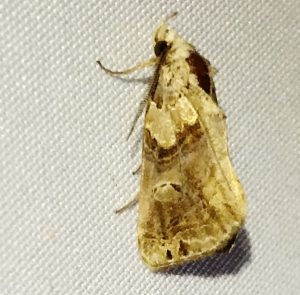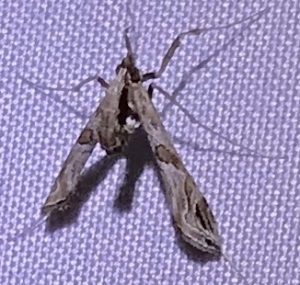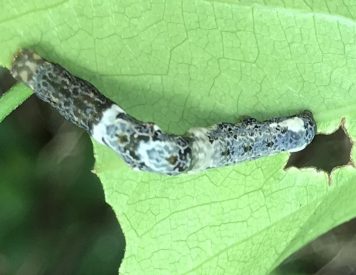The October 2020 Texas Master Naturalist Conference saw 1,165 Texas Master Naturalists from all 48 chapters across Texas attending the annual event — virtually — a format that allowed experts near and far to provide 93 technical sessions throughout the week.

One fun and lively presentation on the first day was by a repeat presenter: Dallas-Fort Worth area Urban Wildlife Biologist Sam Kieschnick, Texas Parks and Wildlife Department whose presentation about the importance of moths in the ecosystem was entitled “Bird Food with Wings: Moths.”
“If you want birds, you need moths,” Kieschnick said. “Moths are a crucial part of the food web.” In the overall scheme of things, moths, in all stages, provide food for things that have backbones.
Both moths and butterflies are in the same order, Lepidoptera – from ancient Greek, lepis, meaning scale, plus pterón, meaning wing. They are insects that have four lanceolate wings (longer than they are broad) and often brightly colored scales. Yes, moths, too, are colorful and surprisingly beautifully patterned.
Although moths primarily work under cover of darkness, it’s possible to see some in the daytime. A quick way to tell if you are looking at a moth, its antennae is long and thin on the female and feathery on the male. A butterfly’s antennae usually looks like it is clubbed at the tip.
Moths historically have suffered a bad rap, known only for rendering holes in clothes and crop-desolation. There are those few species that cause damage, but the vast majority are harmless to the agricultural industry, according to Kieschnick.
If you’re familiar with the saying, “all shapes and sizes,” it truly fits when describing moths. Moths are of two arbitrary groupings: microleps and macroleps. In the first group, an example Kieschnick displayed in his PowerPoint was of a Chinquapin leaf-miner moth whose tiny bronze, gold, and burnt umber mottled scales give a length measurement of 3 to 4 millimeters — a short grain of rice can be as long as 5.5 mm. Three millimeters is equal to 0.11811 inch. In the macro group, in the Rio Grande Valley, our largest moth has a wing span of up to seven inches — the black witch moth.

As for shape, a most interesting moth Kieschnick discussed, and one that I photographed from my moth sheet this fall, is Lineodes interrupta — from Latin — broken apart, interrupted. The moth has a wingspan of 21 mm – that’s 0.826 inches. What’s unique with this moth is not only its split, two-part shape, but while at rest, it tilts its abdomen all the way to its head. At a glance, this moth would probably be labeled as just another brown moth by the uninitiated. When enlarged on a computer screen, the richness of the brocade-like design is revealed in shades of chocolate, mocha, and cream.
Kieschnick encourages learning about and documenting moths. His excitement about them in his presentation was infectious. He offered his iNaturalist.org moniker: Sambiology for those who want to see the myriad species of moths found in Texas. “Moths are just waiting for you to appreciate them,” he said. The best way to attract moths is with habitat management. “Moth diversity is directly correlated with plant diversity,” he said.

Many of our native plants aid moths, whether as caterpillar food or shelter during the day. I have a kinder notion toward a tenacious, obnoxious, binding native vine because of a moth caterpillar I luckily happened upon earlier this year. The plant is variable leaf snailseed (Cocculus diversifolius). Many of you have battled this, rescuing beloved plants and shrubs from its strong strangling hold. I was delighted to see a pretty shades-of-gray moonseed moth caterpillar eating the leaves of that disliked vine. Moonseed moth caterpillar
During the summer and fall, I had the adult version visit my moth sheet: the beautiful moonseed moths with their wings like royal robes of golden velvet. I still won’t let the vines run rampant, but at least I can see the benefit of their leaves.
A parting thought about promoting moth activity, Kieschnick advises to keep leaf litter for the cocoon stage of moths. Moths generally go through their last stage near the ground, under the leaf debris, burrowed into the soil or under rocks.
He also advocates moth sheet set-ups during seasons when the night temperatures are above 60 degrees (F). Texas Master Naturalist Joseph Connors has an excellent blog post about attracting moths to a moth light set-up at this link: https://www.stbctmn.org/post/mothing